20 Things You Need To Do When Bathing Suit Shopping
Shopping for the perfect bathing suit can feel like navigating an endless maze of styles, sizes, and cuts—all while battling the pressure to look and feel your best. It’s no wonder that many of us dread the dressing room mirror or impulsively settle for a suit that doesn’t quite work. Yet, finding a swimsuit you truly love is far from impossible. In fact, it can be an empowering experience that leaves you feeling confident and ready to make the most of sunny days and poolside fun. A key to success lies in avoiding a set of common pitfalls that often lead to frustration or disappointment. From obsessing over the numbers on a size tag to overlooking the importance of supportive design, these oversights can derail an otherwise promising shopping trip. Fortunately, identifying and understanding these mistakes can help you make more informed decisions, ultimately saving time and money. We've expanded our list, diving into 20 of the most frequent swimsuit-shopping missteps, offering strategies and solutions grounded in expert insight. Let's get shopping!
1. Overthinking the Size on the Tag

One of the biggest mistakes in swimsuit shopping is obsessing over the size on the tag rather than how the garment actually fits your body. Sizing can vary dramatically between brands, even more so with international labels. A “medium” in one brand might fit like a “large” in another, leading to confusion and frustration if you stick strictly to the number. According to Mali Sananikone Gaw—co-founder of performance-luxe swimwear brand Via Eden—it's crucial to let go of the idea that the size must match what you wear in everyday clothing. Swimsuits are designed differently, accounting for stretch, water absorption, and body shape variations. Instead, approach swimsuit shopping by trying multiple sizes or styles in each brand to see which drapes best. For instance, you might need a larger top if you have a fuller bust, or a smaller bottom if you prefer minimal coverage. Buying separates can be particularly helpful here, allowing you to tailor the suit to your proportions rather than forcing one size to fit both top and bottom. By focusing on the practical fit and forgetting the label, you’ll likely end up with a swimsuit that looks and feels far better than one chosen purely based on the tag.
2. Insisting on Overly Covered Bottoms

While many of us default to full-coverage bikini bottoms or one-piece suits to hide perceived “problem areas,” wearing too much coverage can inadvertently highlight the exact regions we want to minimize. Mali Sananikone Gaw points out that visual focus tends to settle where the fabric is most concentrated. If your suit covers most of your backside, eyes might gravitate to that section, sometimes creating a less balanced overall look. Instead, consider designs that skillfully balance coverage and subtle exposure. A slightly higher cut on the leg can elongate your silhouette, making legs appear longer and leaner. If you’re nervous about revealing too much, explore color-blocking around the waist or a bold trim along the edges. These elements guide the viewer’s eye to strategic focal points rather than full coverage. Additionally, pin-tucking ruching at the center back can create gentle gathers that both shape and flatter the buttocks, offering a visually lifted appearance.
3. Forgetting Proper Support

Support is often overlooked when swimsuit shopping, yet it’s one of the most critical elements for comfort and confidence. Many women choose swimwear purely for style—thin straps, plunging necklines, or delicate embellishments—without considering whether the suit can handle movement, water sports, or even a casual day of beach volleyball. According to Gaw, adjustable ties, sturdy stitching, and stable underbust seams can make all the difference, particularly for women with larger chests or those engaging in active pursuits. Underwire bras and molded cups can work for some, but they may not always be the most comfortable option—especially if you plan on swimming in ocean waves or racing down waterslides. Soft cups, thicker straps, and reinforced bands might offer a more personalized fit, ensuring the suit stays put regardless of activity level. Gaw also recommends checking how parallel the underbust band is to the floor; if it’s riding up or angled, the suit might be too loose.
4. Sticking with Flimsy Built-In Cups
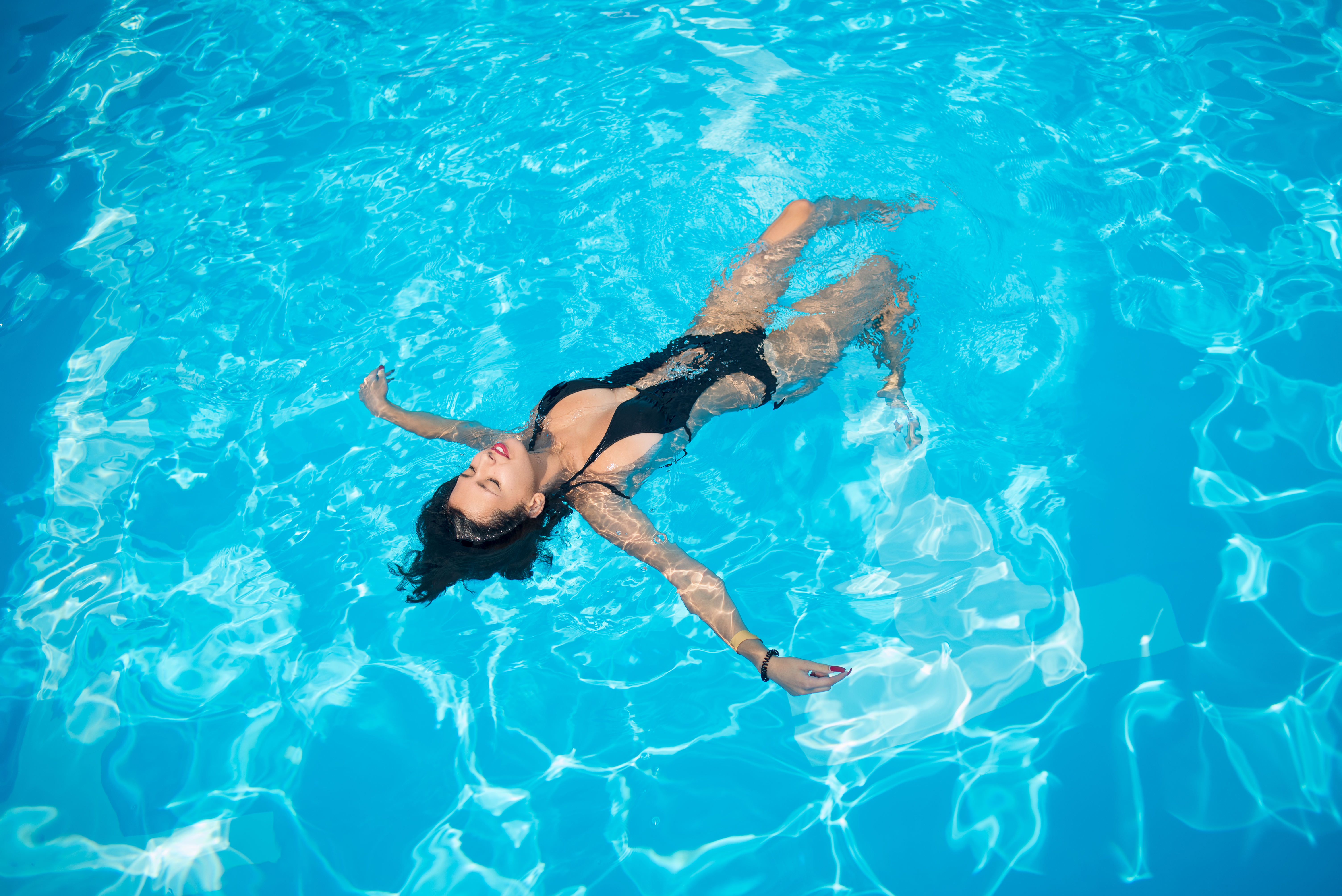
Those thin, removable bra pads that come standard with many swimsuits may provide some shaping, but they often lack genuine support—particularly for those with larger busts. They can crease, shift around when you move, or even pop out in the wash, leaving you with an uneven or ill-fitting look. Mali Sananikone Gaw advises replacing them with better-quality removable pads if you need more structure, shape, or coverage. Brands like Bravo specialize in ultra-thin, yet supportive inserts that deliver a natural silhouette. If you crave a confidence boost in the cleavage department, choose padding specifically designed for that purpose rather than relying on the generic foam discs that come packaged with the suit. On the flip side, if coverage is all you need, a lightweight pad might suffice to prevent outlines from showing through. Just be sure to remove and rinse them gently after each wear to maintain shape and cleanliness.
5. Braving the Dressing Room Alone
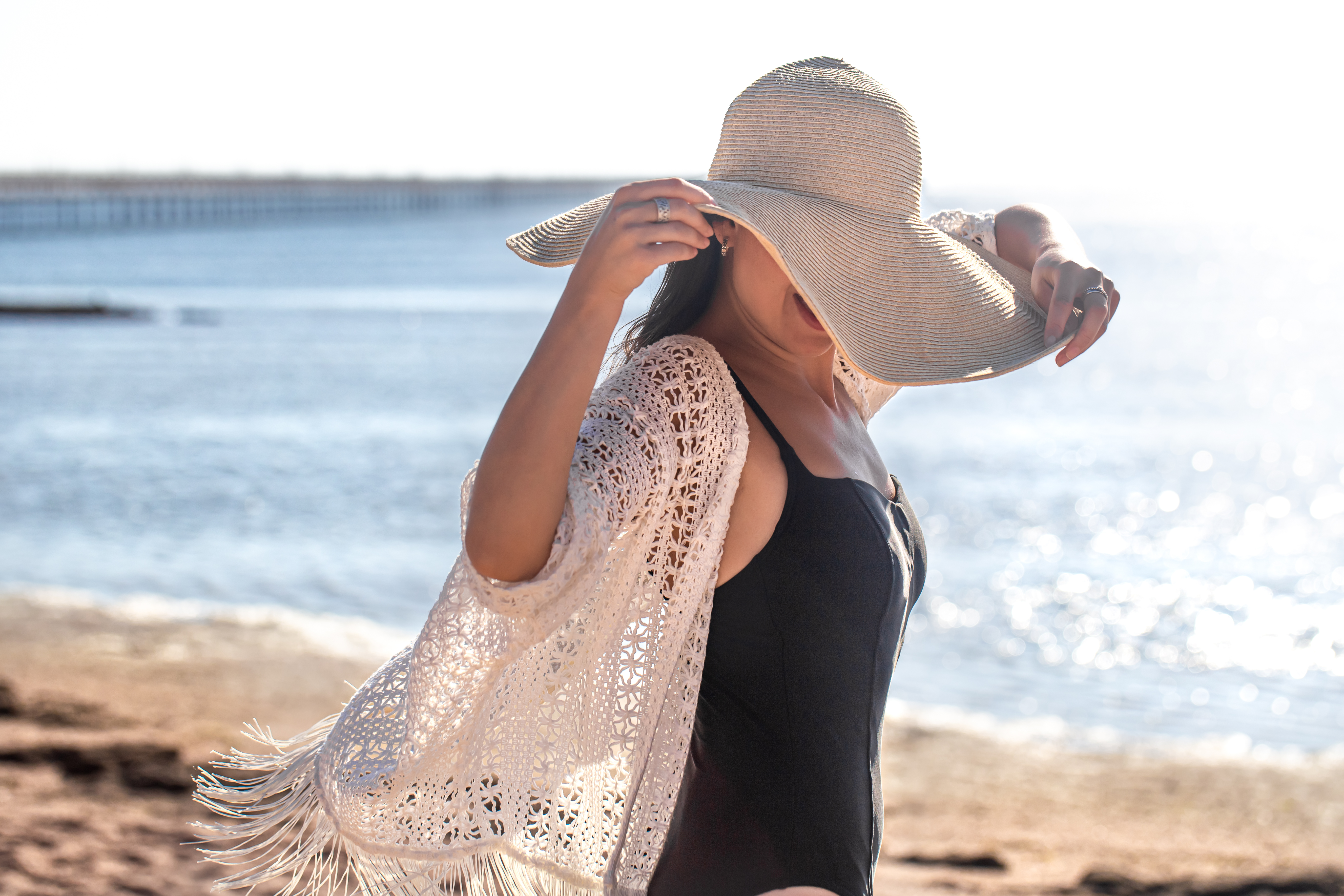
Shopping alone can be convenient, but when it comes to selecting a swimsuit—a garment that can stir feelings of self-consciousness—an extra pair of eyes can be invaluable. A friend or family member can offer honest feedback and might suggest colors, styles, or cuts you wouldn’t normally pick for yourself. They can also take photos from multiple angles, giving you a more complete view than a single mirror can provide. Moreover, a supportive companion can help keep frustration at bay if you’re in between sizes or struggling to find a suit that feels right. They can encourage you to keep trying, ensuring you don’t settle prematurely. Having someone along for moral support can alleviate anxiety, making the process feel more like an adventure than an ordeal. If you’re shy about bringing someone to the store, you could also try ordering suits online, trying them at home, and video-calling a trusted friend for their perspective.
6. Settling for Low-Quality Construction
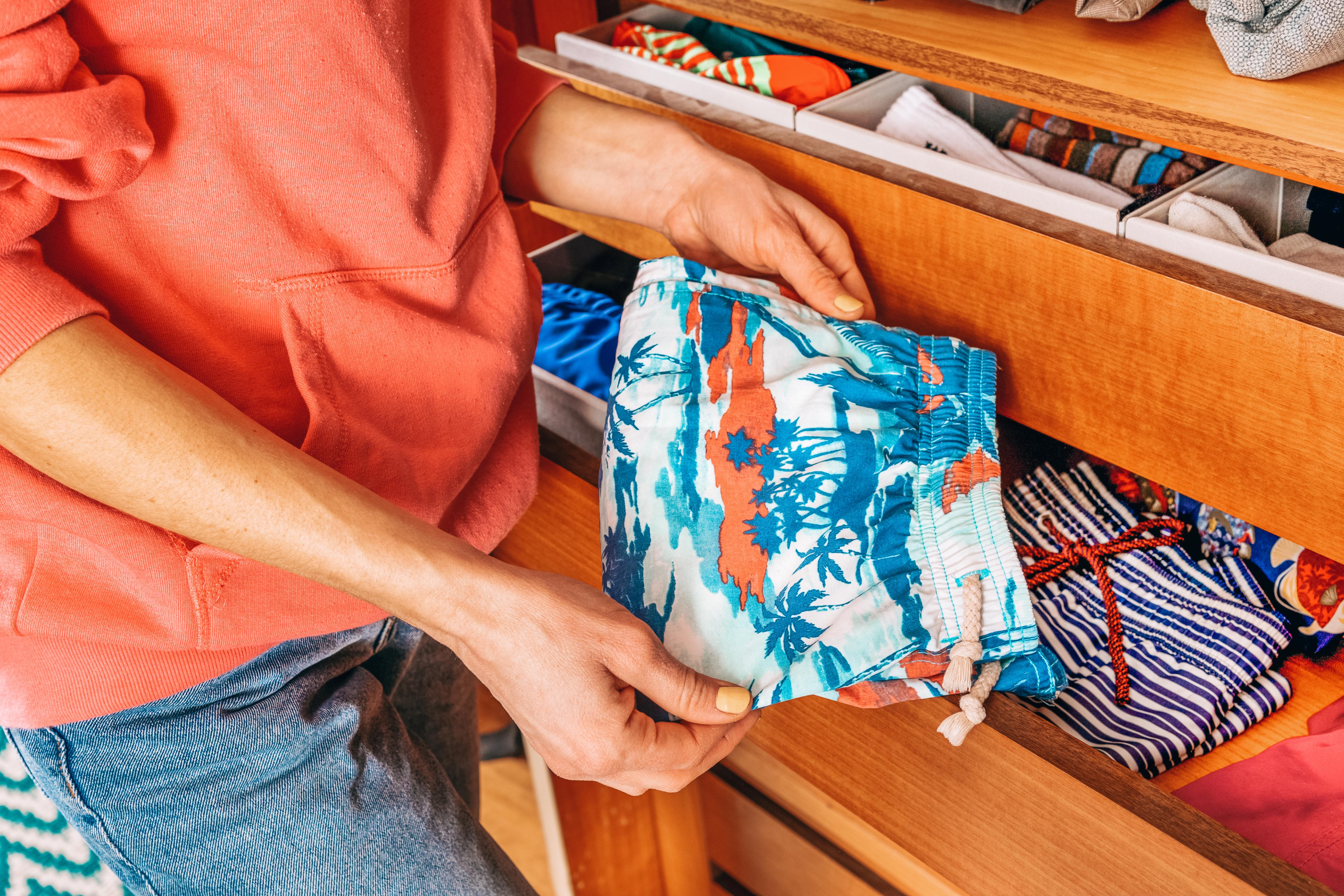
If your swimsuit constantly rides up, cuts into your skin, or wears thin after just a few uses, poor construction may be to blame. As Gaw notes, pinching and unflattering bulges can result from improperly sewn seams or elastic that’s either too tight or insufficiently secured. Often, cheaply made suits employ quick, low-cost techniques like exposed elastic, minimal lining, or uneven stitching, leading to discomfort and a short lifespan. Before you invest in any swimsuit, flip it inside out to examine the seams. Well-constructed suits typically feature “clean-finish” or hidden elastic seams that lie smoothly against your skin without digging in. Double-lining can enhance support and opacity—especially important if you’ll be in bright sunlight or watery conditions where thin material becomes see-through. You’ll also want to ensure that the fabric includes a sufficient percentage of spandex or Lycra for durable stretch.
7. Skipping the Return Policy Check

In a rush of excitement or desperation, many of us finalize a swimsuit purchase without confirming the store’s return or exchange policy. This oversight can lead to disappointment if you realize at home that the suit doesn’t flatter your figure or feels uncomfortable once you’re moving around in it. Some retailers offer full refunds within a certain timeframe, while others only provide store credit—or disallow returns on swimwear entirely for hygienic reasons. To protect yourself, always double-check return guidelines before buying, especially if you’re shopping online. Look for details on whether tags must remain attached, if there’s a sanitary liner requirement for bikini bottoms, and what your window of time for returns might be. If you’re ordering multiple sizes or styles to try on at home, ensure the brand permits or even encourages this practice.
8. Failing to Experiment with Silhouettes
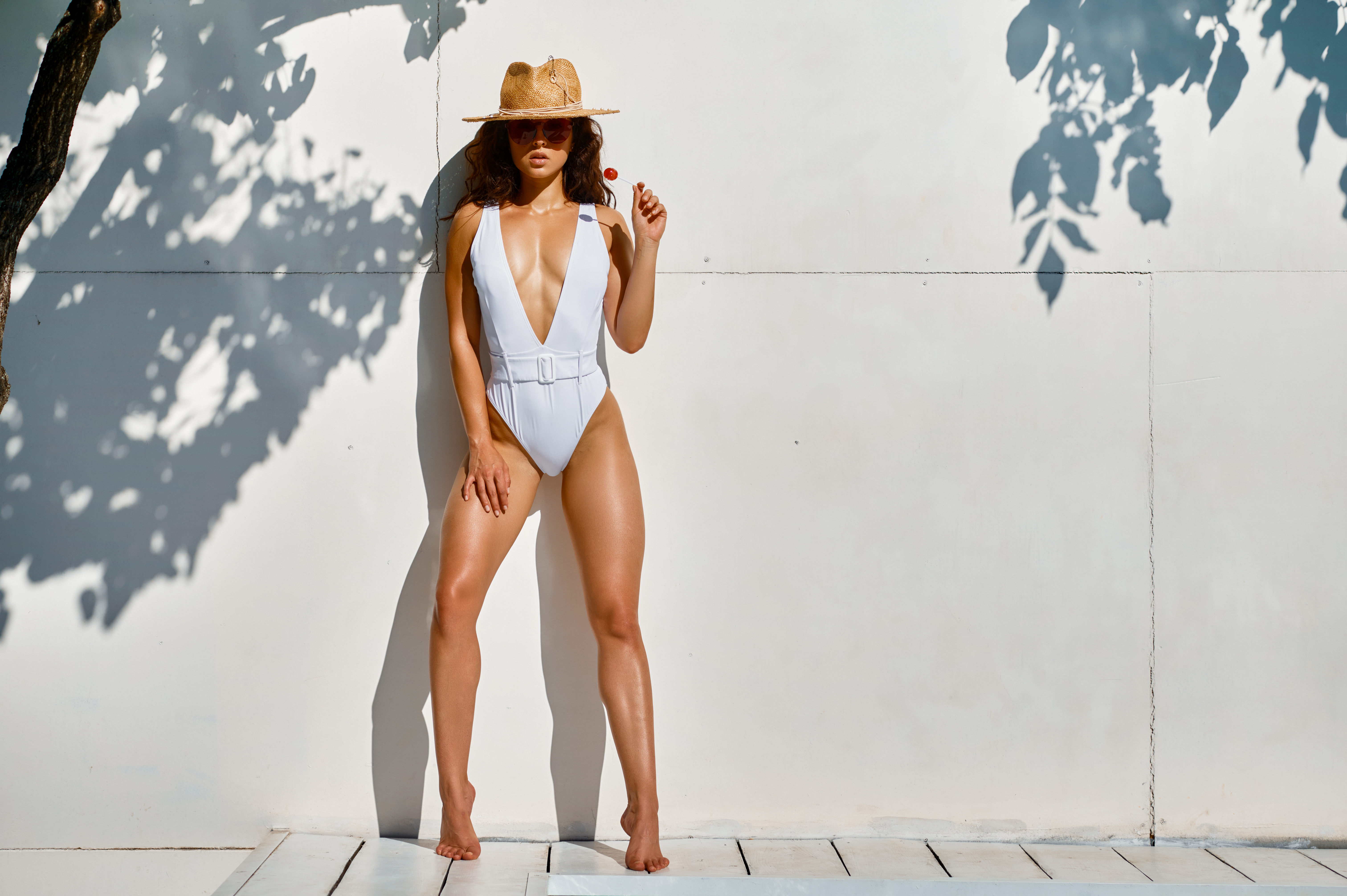
If you always gravitate toward the same silhouette—like a standard triangle bikini top or a scoop-neck one-piece—your comfort zone might be limiting you. Over time, your body changes, and so do swimsuit trends and technologies. You might discover that a structured balconette top provides flattering lift you never knew you wanted, or a high-cut leg can accentuate your waist and elongate your legs. Challenging yourself to try something different can be enlightening. Halter-neck tops may reduce neck strain if they’re well-padded or have broad straps. Off-the-shoulder ruffle designs can soften broad shoulders or create volume for narrower frames. For those who prefer more coverage without compromising style, tankinis or longline bikini tops offer a blend of modesty and contemporary flair.
9. Ignoring Fabrics and Materials

Most shoppers focus on appearance—color, pattern, and cut—without giving enough thought to the fabric composition. Yet, the right materials can significantly impact comfort, durability, and how the suit responds to water. Swimsuits with a higher percentage of spandex or Lycra typically offer better elasticity, retaining their shape after multiple wears. If you plan on swimming in chlorinated pools or saltwater regularly, fabrics specifically designed to withstand chemicals and fade (like chlorine-resistant blends) are worth seeking out. Performance-luxe brands like Via Eden often invest in thicker, high-quality textiles that support a range of body movements, whether you’re surfing or lying on a sun lounger. Double-lined suits can also help with opacity—preventing see-through mishaps when the suit is wet—and provide modest shaping. Additionally, some materials feature UV-protective properties, which can be beneficial if you spend extended time in direct sunlight.
10. Not Considering the Activity

It’s easy to be swayed by a striking pattern or a cute ruffle, but your primary needs should align with your intended activities. If you plan on surfing, diving, or playing beach volleyball, you’ll want suits that stay secure through dynamic movements. This could mean opting for thicker straps, racerback designs, or bottoms with a slightly snugger fit to avoid embarrassing slip-ups in the waves. Conversely, if your primary goal is lounging by the pool or sunbathing on a deck chair, you might prioritize style and minimal tan lines over heavy-duty support. Perhaps a strappy monokini or a bandeau top that shows off your shoulders suits your laid-back approach. Think realistically about whether you’ll be chasing children around the splash pad, taking scenic beach walks, or posing for photos by the resort bar. Don’t forget about transitional wear, too. If you’re heading to a waterfront restaurant after a day of swimming, a suit with a stylish cover-up might serve you better than a tricky halter you can’t easily take off. Matching your bikini or one-piece to your actual lifestyle helps you avoid regrets and ensures you’ll get maximum use out of your purchase, whether you’re strolling the shoreline or riding the waves.
11. Rushing the Decision
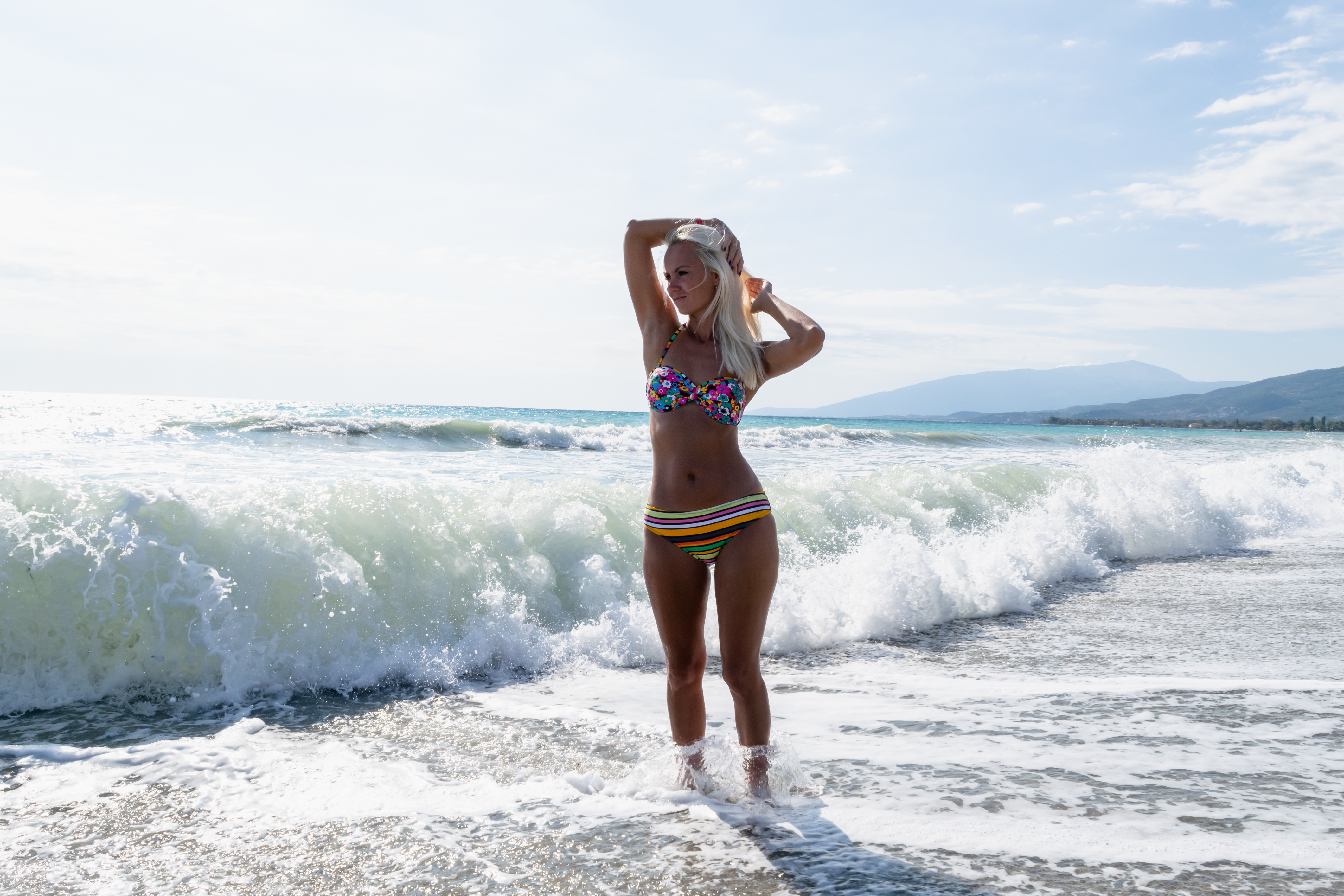
The dressing-room experience can be tiring—especially if you’ve tried on a dozen suits with little success. Still, rushing a purchase just to “get it over with” risks picking a swimsuit that’s only half-right. You might later notice uncomfortable digging at the straps or realize the color washes you out when you’re in natural light. To avoid this, set aside enough time to shop with minimal stress. Try on multiple styles, and if possible, snap photos from various angles to review. When buying online, be prepared to order several sizes or cuts and return what doesn’t work. Some brands allow free returns and encourage at-home try-ons, letting you assess fit in a more relaxed environment. If you do find a suit that seems promising but need a second opinion, don’t hesitate to hold off on a final decision until you can consult a friend or wait for better lighting conditions. Being patient can help you pinpoint the differences between an okay fit and one that truly flatters.
12. Neglecting Post-Purchase Care

You’ve finally found that perfect swimsuit—only to toss it in the washing machine with harsh detergent or leave it crumpled in the trunk of your car after a day at the beach. These habits significantly reduce a suit’s lifespan, causing fading, loss of elasticity, or unappealing pilling. Proper care can keep your swimsuit looking fresh and fitting well across multiple seasons. A crucial step is rinsing your swimsuit in cool water immediately after each wear, especially if it’s been exposed to saltwater, chlorine, or sunscreen. Next, gently hand-wash using mild soap—fragrance-free or specially formulated soaps for delicates are ideal. Avoid twisting or wringing out the suit, as this can stretch the fibers. Instead, press it gently between towels to remove excess moisture, then lay it flat to dry in the shade. Direct sunlight can cause colors to fade faster, so keep that in mind when selecting your drying spot.
13. Overlooking the Importance of Color

Color can make or break how a swimsuit looks on you, yet many shoppers default to black or neutral shades, assuming they’re the most universally flattering. While these colors can work, vibrant hues or unique patterns might complement your skin tone or highlight features more effectively. For example, warm-toned individuals often look stunning in earthy shades like coral or olive, while cooler undertones pop in jewel tones such as emerald or sapphire. Additionally, patterns can strategically camouflage areas you’re less confident about or draw attention to features you want to highlight. Stripes, for instance, can elongate your silhouette when vertical, while small, scattered patterns add dimension. If you’re hesitant to experiment, try incorporating color through accents like trims or reversible designs that let you choose between bold and subdued. Ultimately, understanding your color palette can help you pick a suit that enhances your natural glow and boosts confidence.
14. Forgetting to Check for Adjustable Features
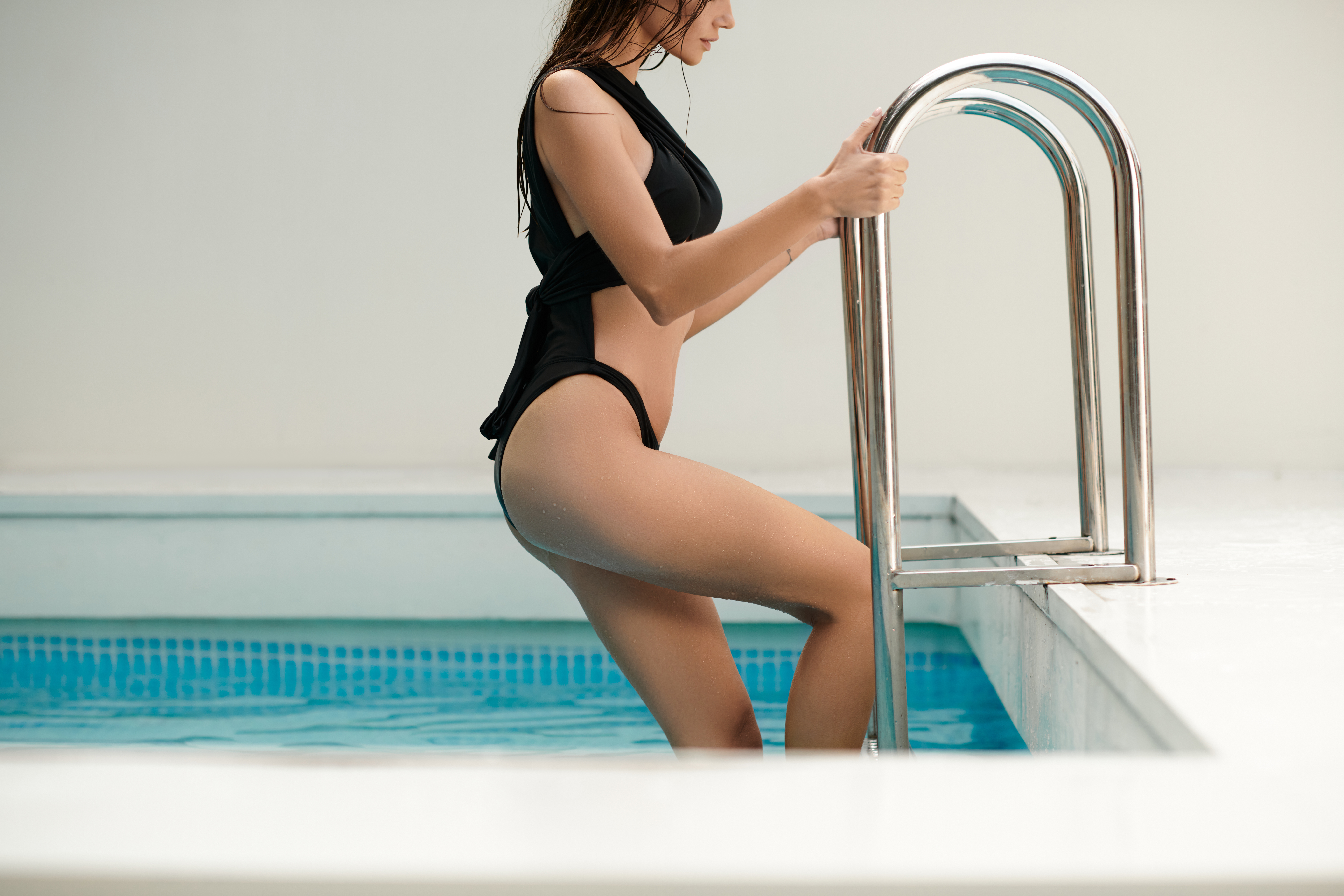
Swimwear without adjustable straps, ties, or bands can limit your options for achieving a snug, flattering fit. Bodies come in diverse shapes, so flexibility in customization ensures your swimsuit fits like a glove. Adjustable straps allow you to raise or lower support on the shoulders, while side ties on bikini bottoms let you control how snug or loose they sit on your hips. Some suits even feature ruching or drawstrings on the torso or waist, allowing you to tailor coverage and create the most flattering silhouette. These details are especially helpful if you have asymmetrical proportions or fluctuate in size. When browsing, look for designs that let you modify fit without compromising the structure of the suit. Adjustable elements not only improve comfort but also add versatility, ensuring your swimsuit adapts to various activities, body changes, or even just your mood.
15. Neglecting UV Protection Features

While sunscreen is essential, swimsuits with built-in UV protection can provide an extra layer of defense against harmful rays. Many modern swimsuits incorporate UPF (Ultraviolet Protection Factor) fabric, which blocks a significant percentage of UV radiation, reducing the risk of sunburn and long-term skin damage. This feature is particularly valuable if you’re planning extended beach days or outdoor water activities where reapplying sunscreen might be tricky. UPF swimwear is available in stylish options, from long-sleeve rash guards to chic one-pieces and bikinis. If you’re sensitive to sun exposure or want to prioritize skin health, consider investing in a swimsuit with this protective feature. Pairing UPF swimwear with a wide-brim hat and sunglasses ensures you stay protected without sacrificing style, letting you enjoy sunny adventures worry-free.
16. Not Considering Coverage Options

Coverage preferences vary widely, and finding a swimsuit that aligns with your comfort level is key to feeling confident. Some may prefer full coverage for modesty or sun protection, while others want minimal cuts for maximum tanning. However, not all coverage levels are created equal. Full-coverage bottoms can offer security and sculpting, but if poorly designed, they might ride up or sag. Meanwhile, cheeky cuts can elongate the legs but might not provide enough support for active movements. Similarly, a high-neck bikini top might suit those wanting extra chest coverage, while a plunge neckline emphasizes the décolletage. To find the right balance, focus on the activity and environment—whether it’s lounging at a resort, swimming laps, or playing beach volleyball. Many brands now offer customizable options, like removable straps or mix-and-match tops and bottoms, so you can achieve a personalized level of coverage that fits your lifestyle.
17. Overlooking Swimwear Accessories

Swimsuit shopping often stops at the suit itself, but accessories like cover-ups, hats, and sandals can elevate both style and practicality. A lightweight sarong or kaftan not only looks chic but also provides extra coverage when transitioning from the pool to a beachside café. Wide-brim hats and polarized sunglasses are fashionable yet functional, protecting your skin and eyes from UV rays. For water activities, water-resistant sandals or slides make it easier to navigate slippery surfaces while maintaining a coordinated look. Accessories can also add versatility to your swimwear wardrobe. For instance, a bold statement necklace or earrings can transform a simple black one-piece into a dinner-ready outfit when paired with a skirt or wide-legged pants. Thinking beyond the swimsuit ensures you’re fully prepared for any activity while staying stylish and comfortable.
18. Ignoring Seam Placement

Seam placement may seem trivial, but it can drastically impact the overall fit and appearance of a swimsuit. Poorly positioned seams can create unwanted bulges or draw attention to areas you’d prefer to downplay. On the other hand, strategic seam placement can enhance curves, define the waist, or add structure. For example, diagonal seams across the torso can create a slimming effect, while vertical seams elongate the body. High-quality swimsuits often feature flatlock or bonded seams that lie flush against the skin, reducing irritation and ensuring a smoother fit. When trying on swimwear, pay attention to how the seams interact with your body. If they pinch, dig in, or highlight areas unevenly, it might be worth trying a different style. Investing in a suit with thoughtful seam placement can significantly enhance both comfort and aesthetics.
19. Focusing Solely on Trends
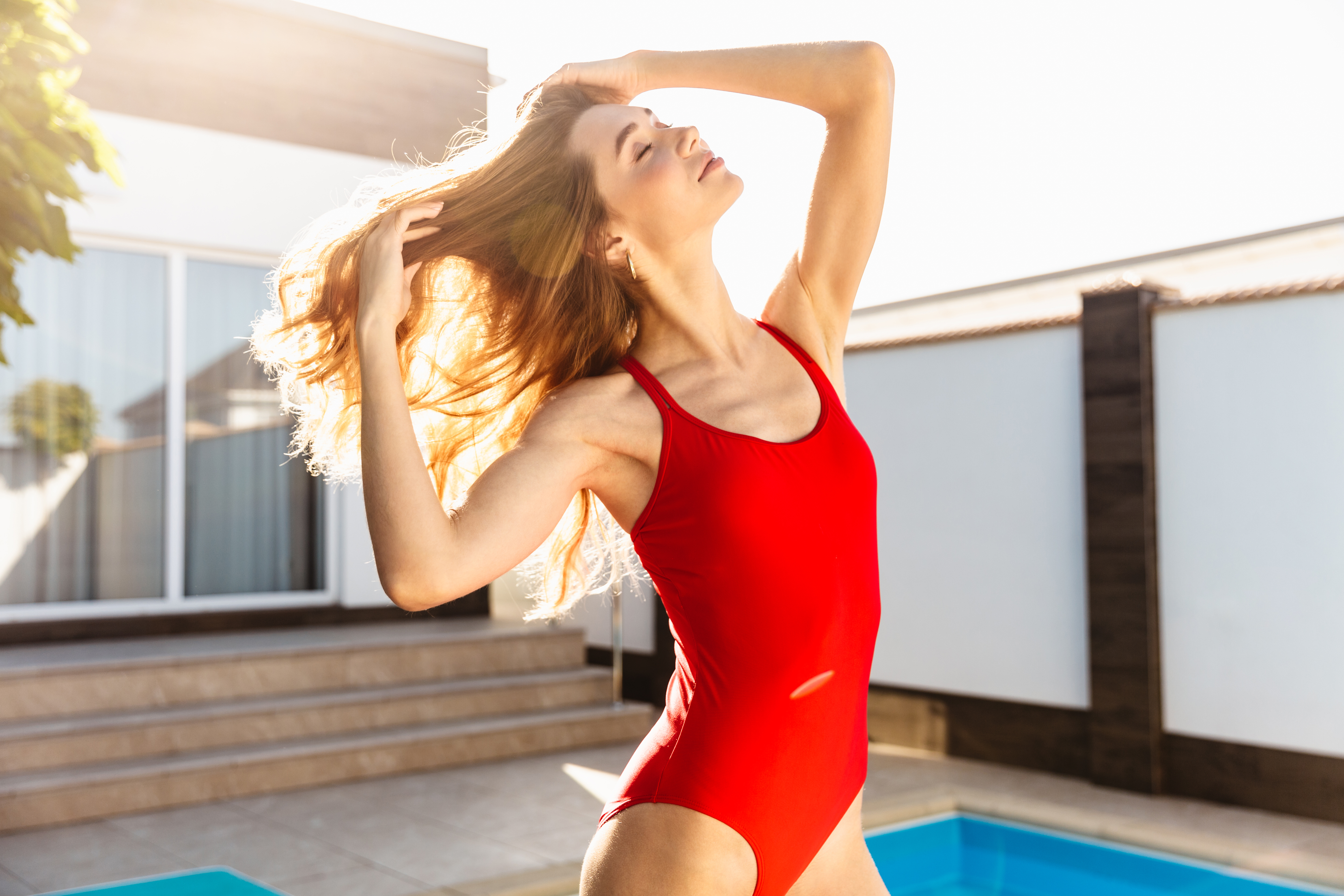
While trendy swimsuits can be fun, they’re not always the most flattering or versatile option. High-cut legs, cutouts, or neon hues might dominate social media one season but fall out of favor the next. Instead of chasing trends, focus on finding timeless designs that suit your body shape and personal style. Classic one-pieces, halter tops, or high-waisted bikini bottoms offer enduring appeal and often provide more coverage and support. If you want to experiment with trends, consider incorporating them through accessories or smaller details like colors or patterns. Balancing trendy elements with timeless silhouettes ensures your swimsuit collection remains stylish and wearable for years to come.
20. Forgetting About Multipurpose Designs

Multipurpose swimwear, like reversible or convertible designs, offers flexibility and value. Reversible swimsuits allow you to switch between two patterns or colors, effectively doubling your options without taking up extra space in your luggage. Convertible suits can be styled in multiple ways—for example, a bandeau top that transforms into a halter or a one-piece with adjustable ties that create different necklines. These versatile options are ideal for travelers or anyone looking to streamline their wardrobe. Beyond style, multipurpose swimwear is a practical investment, ensuring you get the most use out of each piece. By prioritizing versatility, you’ll be ready for any occasion, from lounging on the beach to poolside parties.
Embracing the Perfect Fit

A great-fitting bathing suit can elevate your self-confidence and enhance your beach or poolside activities. By steering clear of these 20 common mistakes—ranging from obsessing over the size on the tag to forgetting about supportive design—shopping for swimwear becomes a more enjoyable process. The key is to experiment with different silhouettes, pay attention to fabric and construction, and never compromise on fit or comfort. With patience and the right guidance, you can find a swimsuit that looks fantastic, supports your lifestyle needs, and stands up to the demands of sun, sand, and surf.